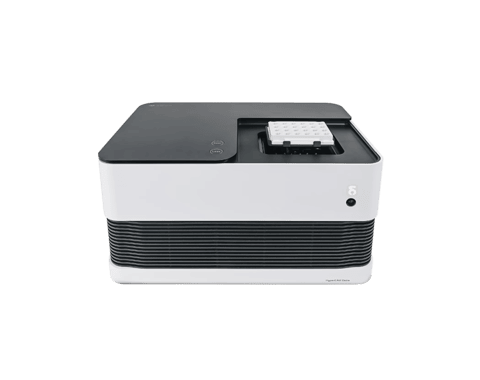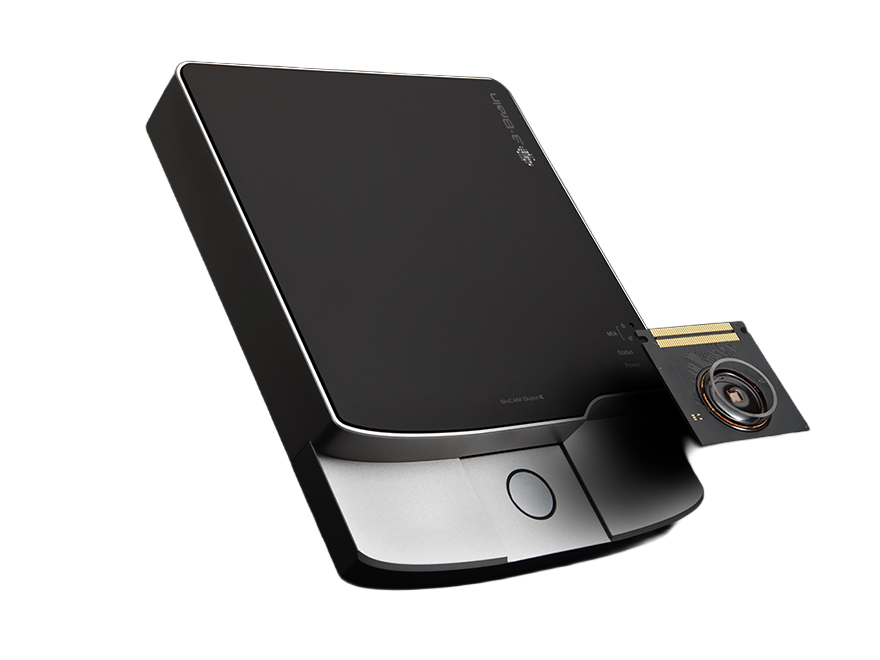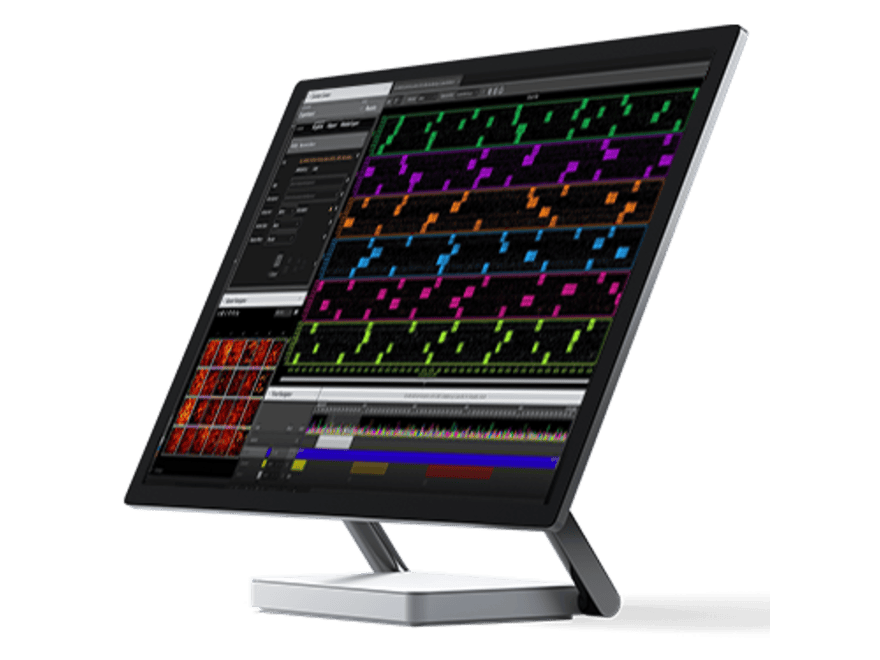Background:
Biointerface technologies have been a staple in science fiction for a long time, the idea of connecting biology to technology, or humans to their creations, can be both awe-inspiring and uncanny.
Yet where exactly is the border between what is plausible and what is possible, between science and fiction?
The short answer is: Nobody really knows.
But maybe we can draw reasonable inferences together by taking a snapshot of the past, present, and near future of biointerface technologies.
In other words: Welcome to the 3Brain-Massimo Grattarola Award 2022.
A history of connection
This Award, sponsored by 3Brain, follows a very simple premise: Connect young people with new ideas in the cell-electronic biointerface field with each other and put some wind in their sails in the form of financial support, recognition, and expert feedback.
The Award is named after Massimo Grattarola, a pioneer in neuronal microelectronics working at the intersection of biophysics, semiconductor electronics, and neuroscience. He firmly believed that bioelectronics is the result of the marriage and cross-fertilization between micro-/nano-electronics and molecular biology of the cell. Subsequently, Massimo’s research was versatile and creative, trying to span the vast valley between these disparate fields by building bridges from both ends towards each other, in hopes they would eventually meet.
In that regard, he was developing fine equipment that could measure the fickle biosignals of cells on one end, and imitate and instantiate biological structures like neurons or networks in silicone on the other (see below his physical circuit analog modeling postsynaptic neuron).
Every great innovation starts with the ability to explore a new connection between disparate parts.

In September 2001, the European Commission, within the framework of Future and Emerging Technologies (FET) appointed Massimo as a Program Coordinator of the project “Neurobit”, to study the bi-directional interaction between a culture of neurons and a small mobile robot, a first instantiation of a closed-loop hybrid system, a simple bio-artificial brain. An idea that even 20 years later is still high-interest research (Yada Y. et al., Appl. Phys. Lett, 2021). He also pioneered the First European School of Neuroengineering.
As a kind and generous mentor and indomitable dreamer, Massimo has also built other important bridges in his life, to his partner and his students, many of whom would carry his hope and inspirations forward as a guiding light to the ideas that would later manifest in 3Brain AG.
“Massimo taught us to be explorers and pioneers, to remain curious, and to set ambitious goals. He was also very interested in passing on his passion to young people and founding new schools of science, which unfortunately didn’t materialize due to his untimely death. We are happy to pass on a little of his teaching and aspirations through this award for young researchers, hoping it could be a first help to their ideas, as Massimo would surely have appreciated” — Mauro Gandolfo, CEO at 3Brain
His early passing has been a stark reminder of the immeasurable value of paying knowledge forward by teaching, mentoring, and guiding the next generation of wisdom seekers, of bridge builders, of curious and daring optimists.
So in memory of this remarkably generous human being, brilliant scientist, and biointerface pioneer, we at 3Brain are honored to carry his name forward with this award to inspire young researchers to follow in his footsteps.
We are happy to report that many heeded that call.
A challenging present
Setting application criteria for any type of award is usually difficult, because humans are individuals with their own idiosyncratic trajectories and histories, varied dreams and motivations, drives and passions. Good ideas can come from many walks of life. Despite important collaborations and demand for Massimo in the US, he decided to build competence from the ground up in Italy, to enable others and lift them up to reach new heights, rather than strictly go for the most straight forward career path himself. Fundamentally, 3Brain aimed for the award to be enabling, to be accessible and not exclusive.
Anybody with a PhD and at least one peer-reviewed publication in a relevant field who is under 40 could apply, and we believe the resulting diversity of ideas from the proposals we received has been speaking for itself (see below).

Yet with many great proposals comes the unpleasant but necessary duty of filtering, evaluation and selection of most compelling ideas. For the Grattarola Award, this filtering process has two layers. First, an internal blinded review of proposals, performed by our scientists using grade-based ranking following multiple criteria, including broad impact, innovation, feasibility, technology utilization, clarity of vision and cohesiveness of proposal.
The top 5 research proposals with the highest scores advance to a second filtering step, evaluation by independent external experts from academia. In this “finalist” round, the young researchers get to present their proposal and vision to esteemed senior colleagues.
This year, our committee included three exceptional scientists and renowned pioneers in their fields:
- Our first committee member was Prof. Egidio D’Angelo, a pioneer in developing multi-modal tools for mapping the integrated cytoarchitecture of neurons and microcircuits to investigate structure-function & network dynamics at the mesoscale. Throughout his career, Prof. D’Angelo has pushed the boundaries of our understanding of the cerebellar network, striving to build integrated descriptions and computational models to address the functional mechanisms at different scales of complexity.
- Our second panelist was Prof. Erwin Neher, one of the inventors of the patch-clamp technique, Nobel Prize winner and one of the intellectual fathers of the electrophysiology field. Prof. Neher has worked on the intersection of biology and physics with a particular focus on how channel proteins and ion fluxes shape synaptic biology and neuronal cell dynamics.
- Our third committee member was Prof. Frank Edenhofer, a developmental biologist and pioneer in reprogramming neural stem cells (iNSC) for therapeutic applications, disease modeling and regenerative medicine. Prof. Edenhofer and his team focus their research on the power of stem cells to recapitulate and correct various disease phenotypes. Unfortunately, technical problems prohibited Dr. Edenhofer from participating at the last minute.
We are very proud and indebted to this brilliant committee to offer their time, help and insight to connect with the ideas of our finalists, engage in deep discussions, and ultimately choose a winner among the many qualified applications.
“The prize was created to allow young researchers to get involved and compare their project ideas, stimulating their scientific curiosity and passion for technology. It is extremely motivating to see the growing participation in the contest and the passion and commitment of the experts invited each year to award the Grattarola prize.” — Alessandro Maccione, CSO at 3Brain
We are happy to report that this year’s event was a smashing success and great fun to participate in. We were inspired by the confidence, creativity and innovative spirit of all finalists. So before we announce the winner, let me quickly try for a short conclusion.
A path forward
Science is about exploration, innovation and curiosity. But it is also about making meaningful connections, contributing to the scientific community, and coming together to exchange ideas and sharpen visions.
This Award is as much a continuation of Massimo Grattarola’s enthusiastic spirit as it is a bridge from the dreams of the past towards new shared hopes for the future. A future built by diverse, creative and relentless young minds.
We are currently the ones in the middle, doing merely our part.
So with this in mind, 3Brain is happy to announce the winner of the Massimo-Grattarola Award 2022:

The winner of the 2022 Massimo Grattarola Award
Interview with the winner of the 3Brain-Massimo Grattarola Award 2022:
(The interview has been lightly edited for clarity)
A) Dear Federico, congratulations on winning the Massimo Grattarola Award in 2022! How did you hear about the award and why did you decide to participate?
Thank you so much for the congratulations! I am very honored to receive this award and I would like to take the opportunity here to thank you all for giving me the chance to present my work and the evaluating committee to appreciate and giving me constructive feedback on the current stage of my project. I came across the Massimo Grattarola Award while I was looking for a MEA system that could boost my project and allow me to record simultaneously GBM organoids and organotypic slice cultures. I ended up on your website with all the products you have available and on the same page the Massimo Grattarola Award was sponsored.
B) Could you share a bit of your strategy when applying for the award? After all, your proposal made it through internal review into the final round and could convince our external committee. Any tips for other participants next year?
This is an interesting question. I think the innovative idea behind the project is one of the things that receive the highest consideration by the evaluating committee. I was really surprised in fact, when I realized that there was so few published works in the literature about the interaction between GBM cells and surrounding neurons and I stress that a lot during my presentation. Past research has been focused so much on the molecular mechanism of GBM cells taking so little consideration of the surrounding environment. I would also recommend to present the project in a way it is understandable for a broad audience since the evaluating committee has a heterogeneous background.
C) Can you tell us a bit about yourself? What did you study and what drives/motivates your research interests?
Of course! I got my master degree in neuroscience in Pavia in the laboratory of Prof. Paola Rossi and then moved to Zurich at the Brain Research Institute in the lab of Prof. Urs Gerber and Prof. Fritjof Helmchen and I focused my research on the synaptic plasticity in the hippocampus. More in detail I was curious on how inputs segregated in different layers, can be integrated in such a way that “relevant” inputs are only the ones who are located on the same dendritic branch, call it clustered inputs, rather than the one with randomized distribution along the dendritic tree. That was the moment I realized how important membrane conductances are so relevant in regulating input integration and output transformation (action potentials). For this reason I did want to investigate the impact of channelopaties in an established model for autism spectrum disorder: the fmr1 KO mice. That was the time I moved to Austin (TX) in the lab of Daniel Johnston. We demonstrated there a brain-area-specific modulation of the HCN channel was able to up or down-regulated the excitation/inhibition ratio in a different way in the hippocampus in comparison to medial prefrontal cortex. All my investigation had been performed in mice but I was curios to translate the impact of channelopaties in human tissue. For this reason when I had the opportunity to work with human tissue from GBM patients here in the Department of Biosciences at the university of Milan I didn´t think twice and jump into the new adventure and start my on group on this topic.
D) Let’s talk science. Your proposal involved a new model system for glioblastoma, brain tumors that are very invasive and that interact with their surrounding brain tissue in complicated ways. Can you quickly summarize the larger frame of your field for lay readers?
With pleasure! A GBM tumor grows besides very complex environments that shape distinct topographical sub-regions called niches. We can distinguish at least 3 main niches: the central core, the vascular and the invading niche. For decades, GBM research has been built on immortalized cells lines, which are a great model for reproducibility and drug screening but they are significantly far away from a physiological condition. We are proposing instead the necessity to use the GBM organoids, recently reported as an established protocol (Jacob et al. 2020) and we are going to model the surrounding neuronal tissue by co-culturing them with hippocampal organotypic slice culture. Our goal in this research is to investigate an unreported way for GBM to communicate with surrounding neurons achieved by a neural-like electrochemical phenotype (we called it so far pseudo-synapse) that might serve as a reverberant connection resulting in tumor growth.
E) Your previous research involved channelopathies and now with GBM you want to tackle the biology of pseudo-synapses. Why are these synapses so special? What do they do for a tumor?
The communication between tumor and the surrounding environment has been neglected for a long time. Just to give you an example, very often the GBM grows silently in the early stage of cancer and the patient is not aware of his/her status until epileptic episodes occur. We don´t have yet an exhaustive answer on why GBM patients suffer from epileptic seizures. The concept of an interaction between neurons and GBM cells has been first described only in 2019 (see Venkatesh et al.). But what about the other way around? Is it this a unidirectional way of communication or does it look more like a feedforwarding loop? Following previous reports, we also have found that GBM are capable of communicating with structures that resemble synapses and they can modulate the excitability of surrounding neurons. The overall function on the tumor growth is, however, yet to be unveiled.
F) In your proposal, you indicated you wanted to use our MEA to selectively stimulate neurons or cancer cells. What do you hope to achieve?
We propose to co-cultured GBM organoids with brain organotypic slice cultures on the 3-Brain MEA (more specifically, Arena HD-MEA) to accommodate both the neuronal and cancer tissue inside and modulate electrically their interaction while recording the changes in the neuronal spiking activity during GBM invasion. I think this is going to be the “golden experiment” that has the potential to become a standard for GBM and neuronal tissue investigation.
G) What are the next steps going to be? Can you use your system and knowledge gained to screen for new treatment options?
That´s a very good question. The identification of the cues that drive the formation of these pseudo-synapses is for sure a priority in my schedule since I consider them the first and most promising therapeutic target. Additionally, it is fundamental to understand what firing activity pattern better stimulates the formation of these GBM to neurons contact. Lastly, it is yet not clear if the capability to form these contacts is a generalized feature of GBM cells or it belongs only to a subtype; in that case, we have in hand subtype-specific drugs that might be efficient in blocking the GBM to neuron communication.
H) What will the award-winning do for you and your research?
This is my very first award as a PI and even prior to the monetary price that comes with it, it has as an incredible motivational boost considering the challenges a researcher has to face when translating his expertise into a very different field of investigation. The Award will allow my group to buy all the necessary equipment to complete the first piece of research we have conducted during this first year. So a strong help on many sides for my young lab.
I) Federico, congratulations again on this well-deserved Award! Thank you for taking the time to talk with me about your research!
Thank you all for giving me the opportunity to participate and be part of such an amazing experience. I hope to come back to you soon with a complete story on the topic that you might find interesting.
This precludes this year’s Massimo Grattarola Award 2022. Thanks to everybody for participating and making this event a success! Truly.
Important: If you are interested in applying for next year's Award and getting an early notification, you can enter you email here.
References
Grattarola M. et al., Medical and Biological Engineering and Computing, 1995
Yada Y. et al., Appl. Phys. Lett, 2021
Copyright:
Featured articles may include proprietary company information on products or research. For educational and other non-commercial purposes, you are allowed to share (copy and redistribute in any medium or format) & adapt (remix, transform, and build upon) the material as long as you give proper attribution (see also: CC BY-NC 3.0 license)
Declaration of conflict of interest:
The author is an employee at 3Brain and the article might contain proprietary information or product mentions.
Acknowledgments:
I want to thank the many participants of this year’s Massimo Grattarola Award and especially Federico Brandalise who has been very generous with his time. Furthermore, I would like to acknowledge Mauro Gandolfo, Alessandro Maccione, and Brunelle Tedesco for explaining their history with Massimo and why his memory, explorative spirit, and enthusiasm for new connections will live on with this Award.























